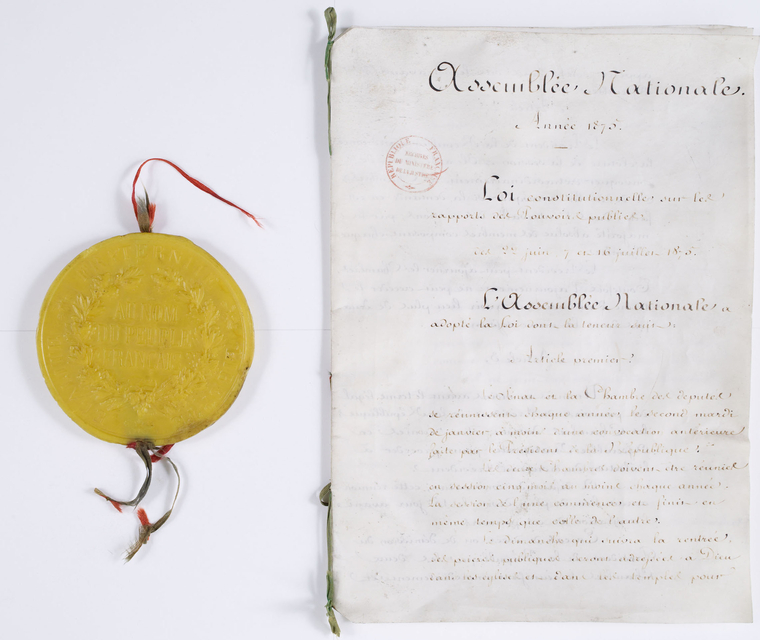In its first four years, from abandoned drafts to fleeting proposals, the Third Republic had no stable constitutional basis. The very nature of the regime remained unresolved, caught in a power struggle between republicans, Orléanist and legitimist monarchists.
It wasn’t until early 1875 that the Assembly brought an end to this provisional regime: thirty political figures, mainly monarchists, were tasked with drafting a set of fundamental acts to underpin the new political organization and ensure it lasted.
Through the Act of 24 February 1875, the Committee of Thirty organized the Senate. Bicameralism acted as a counterbalance to the popular representation in the National Assembly.
The Act of 25 February regulated the public powers. The famous Wallon amendment, by the mention of a “President of the Republic”, confirmed the republican nature of the new government. Wary of the popular opinion movements that had brought Louis Napoleon Bonaparte to power, the election of the President was entrusted to parliamentary vote, and not universal suffrage. Elected for seven years, and unaccountable to the houses, the President of the Republic had significant power, which he shared with a government led by a President of the Council who had many duties.
The Act of 16 July 1875 defined the relationships between the public powers.
These were enhanced by the organic acts of 2 August and 30 November 1875, which specified the electoral proceedings.
The regime that these acts built combined the principles of the Republic with those of the constitutional monarchy.

Updated : 15 December 2022